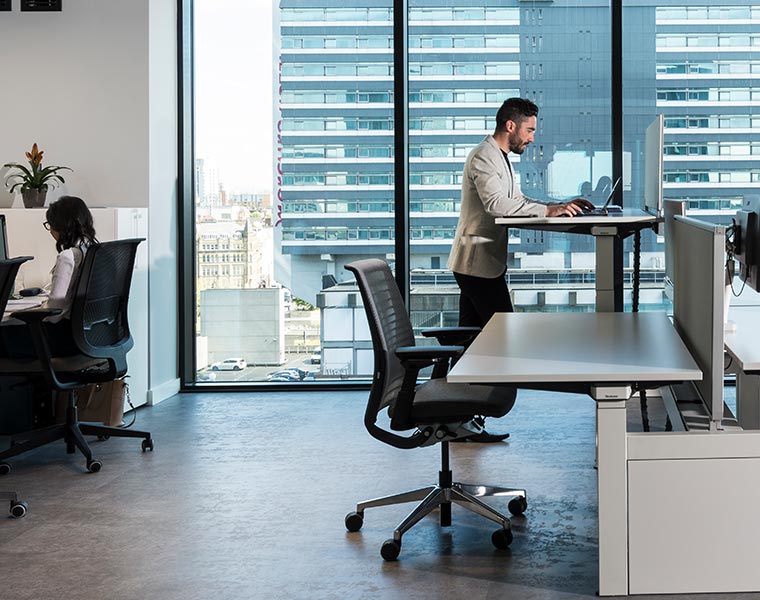An agile workspace is one in which employees can move around more freely and enjoy the many benefits of choice and control on where, when and how they work. In order for this modern concept to work, office design, furniture and technology need to come together to offer adequate resources and to facilitate a flexible environment which breeds creativity, motivation and productivity.
How to design an agile workspace:
Consider going open plan – This type of mobile working would be difficult to achieve without an environment which facilitates the flexibility it requires. A transition into an open plan office is the perfect way to open up the space and eliminate the restrictions that comes with a traditional structured workspace.
Cater for a diverse range of workspaces – ‘Agile working’ has become a trendy buzz-phrase within the industry but to ensure it doesn’t just become a novelty concept, you need to ensure you provide the facilities and resources to make it work. A big part of this is catering for a diverse range of workspaces from collaborative and social settings to private, focus areas which are equally instrumental in agility and efficiency.
Swap dedicated desks for hot desks – It seems like the days of dedicated desks and static work are over so now is the ideal time to rethink your workspace structure and consider swapping some allocated workstations for a hot desking space.
This means remote workers can work efficiently and integrate into the office seamlessly when they are there but there isn’t permanent furniture taking up unnecessary room that could be being used more productively when they aren’t.
Install modular and ergonomic furniture – The right kind of office furniture is a crucial part of designing an agile workspace. We recommend including plenty of modular furniture which can be easily reconfigured or manoeuvred around the space according to task requirements.
We also suggest going for more ergonomic office furniture choices in order to support these new ways of working and postures which have evolved as a result of interaction with more diverse forms of technology.
Make technology more adaptable – Gone are the days when data connectivity and powering up created an anchor to the desk. Now, technology is far more flexible thanks to things like power-integrated furniture (e.g. the media:scape) and versatile information-sharing tools like Clickshare. People and modes of work have become more agile so you need the technology to match.
Don’t forget your office acoustics – Open plan offices, increased collaboration and the ability to move more freely around the workspace, noise levels have risen significantly. In order to ensure this doesn’t impact concentration levels or staff wellbeing negatively, consider incorporating some acoustic solutions to control excess noise such as the Under the Bell felt lighting pictured below.
Doing so will ensure that collaborative work and impromptu meetings can take place without disrupting those who need privacy and quiet in order to concentrate on the task in hand. As we mentioned earlier, focus work is equally as important as collaboration when it comes to planning an agile workspace.
The benefits of agile working:
Now you know how to create an agile workspace, we wanted to leave you with a bit of food for thought on why you should do this by highlighting some of the top benefits…
- Permitting more choice, control and autonomy over how and where people work will foster a culture of trust and transparency between workers and senior members of staff.
- Facilitating different modes of work and enabling employees to transition quickly and easily between them will boost efficiency and productivity.
- As well as getting the most out of your workforce, a positive attitude towards agile working will also help you optimise the use of the workspace itself by introducing spatial adaptability and multifunctionality.
Click for further reading on the pros and cons of agile working.
